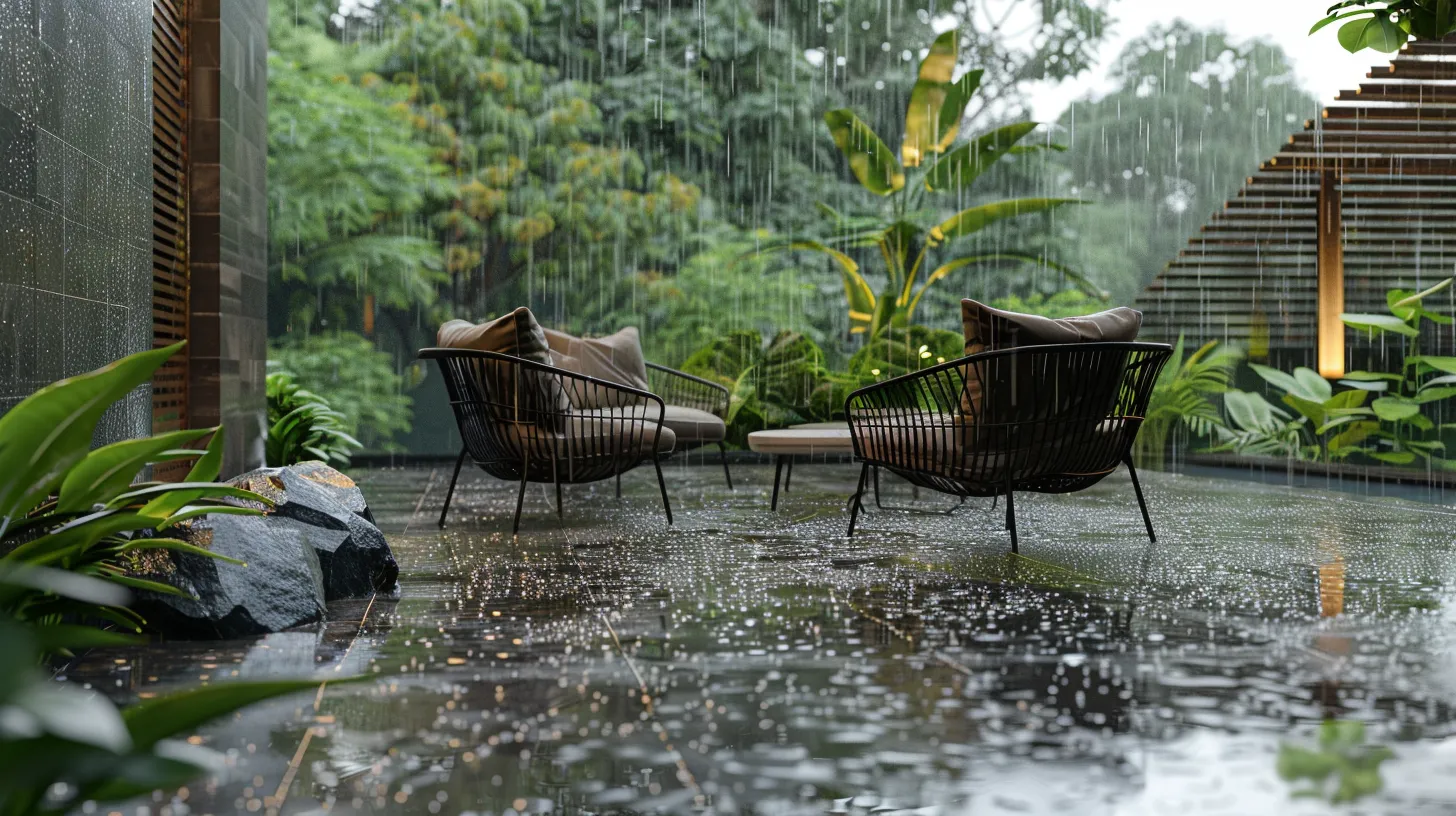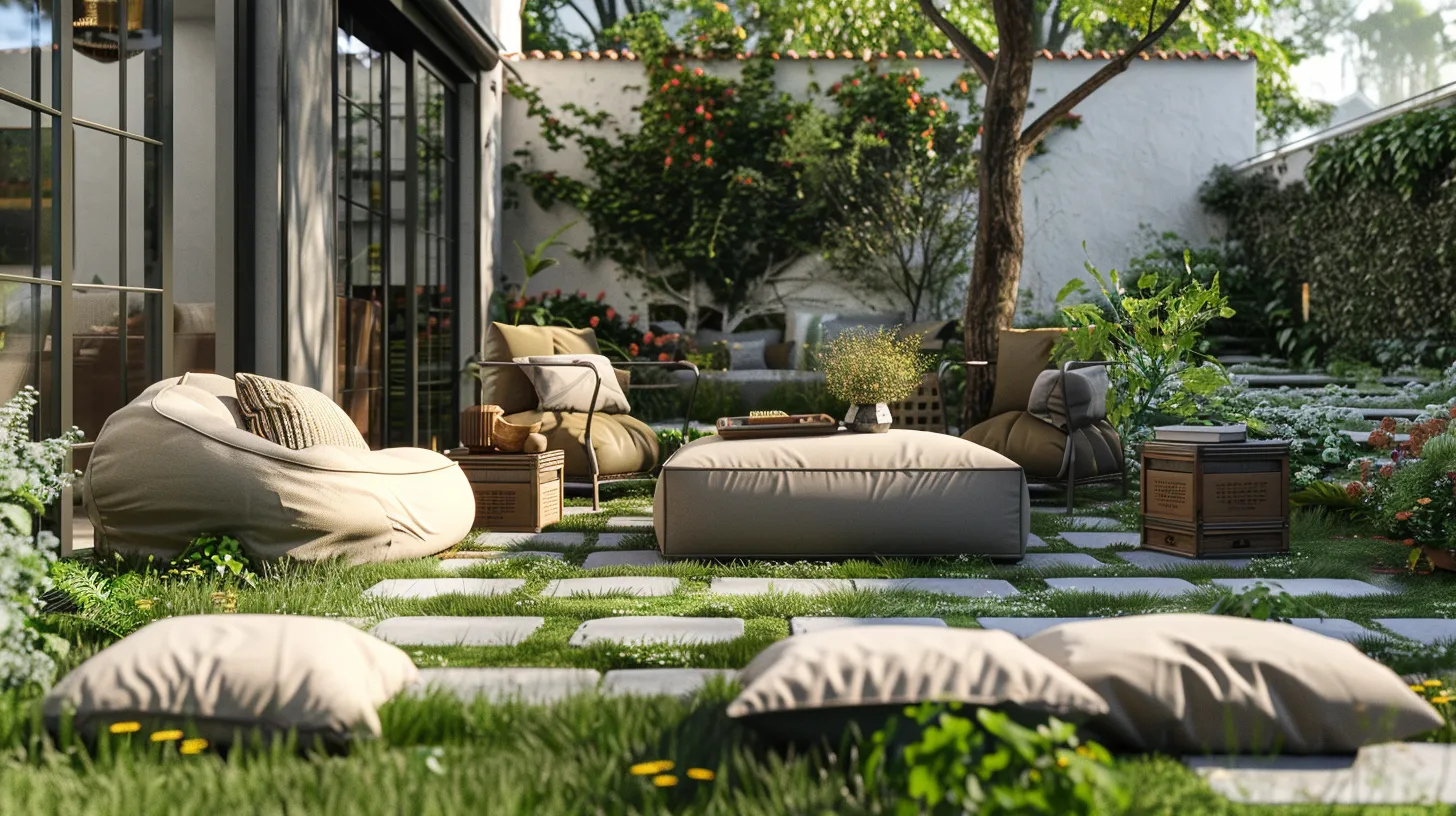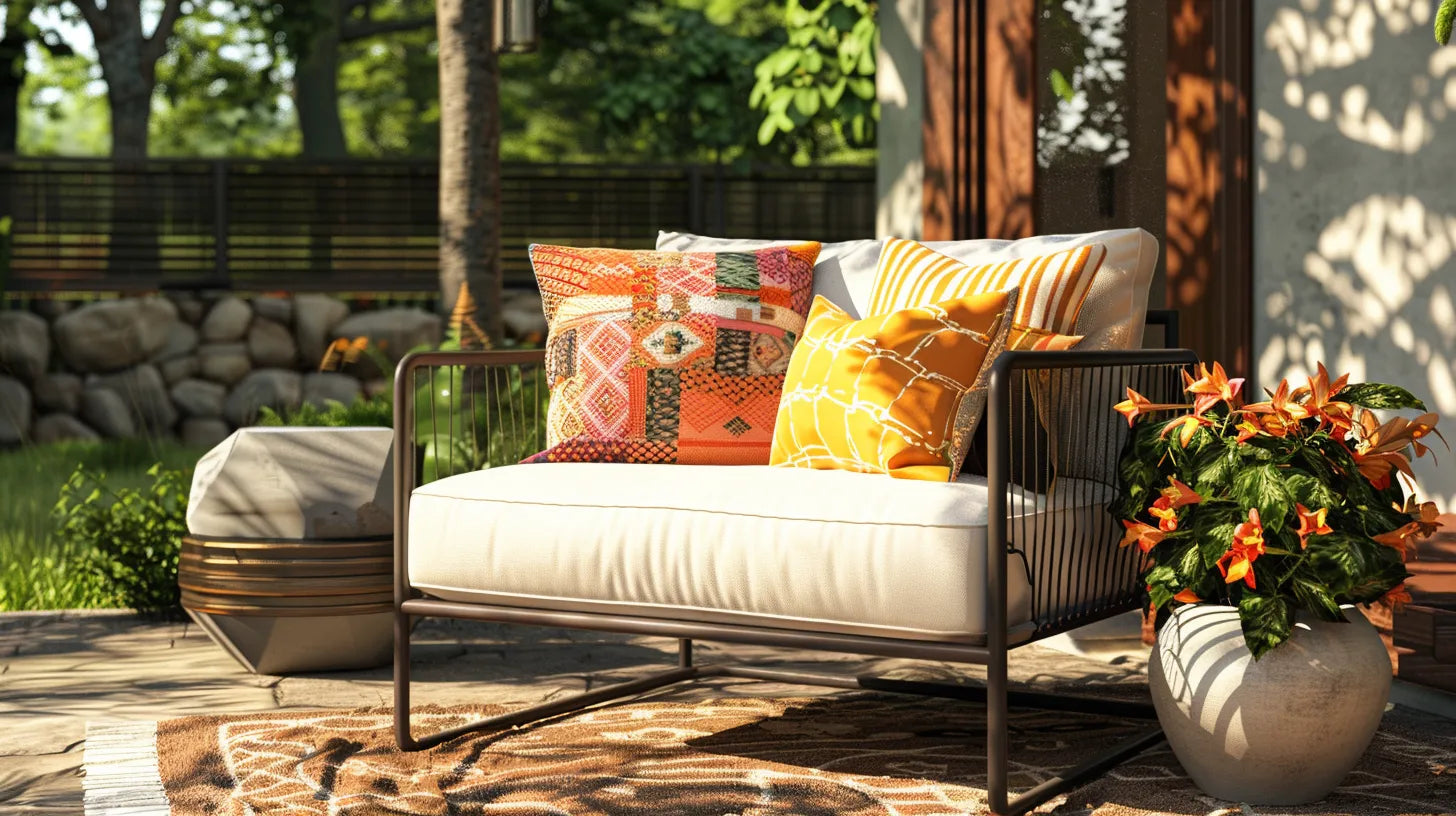Patio chair cushions have undergone a remarkable transformation from simple comfort items to advanced, weather-resistant innovations . Initially made from basic fabrics like cotton or canvas, these cushions were susceptible to weather damage, including fading and mildew. Today, technological advancements in materials such as solution-dyed acrylics and high-performance fabrics like Sunbrella , provide superior water resistance, UV protection, and are antimicrobial . These modern fabrics enhance durability, ease maintenance, and guarantee that cushions retain their aesthetic appeal. Various high-tech coatings also add water repellency while maintaining fabric breathability. Continued advancements in this area promise even greater enhancements in the future.
Early Designs of Patio Cushions

Initially, patio cushions were crafted from basic fabrics such as cotton or canvas, prioritizing simple comfort over durability and resistance to weather elements . These early fabric types, while cozy and visually appealing, were not designed to withstand prolonged exposure to sun, rain, or humidity. This lack of durable materials in early cushion designs meant that they were prone to quicker degradation, fading, and susceptibility to mold and mildew , especially without proper maintenance.
To extend the life of these early patio cushions, straightforward maintenance tips were essential. Owners were advised to store cushions indoors during adverse weather conditions and to perform regular cleaning to prevent the buildup of mildew. However, the effectiveness of such maintenance was limited due to the inherent properties of the materials used.
The fabric choices available during this period also lacked variety in color and patterns, which restricted homeowners' ability to customize their outdoor spaces. This limitation in aesthetic options underscored the need for advancements in cushion technology that would later address these issues by introducing more durable, weather-resistant outdoor fabrics that catered to both functionality and style preferences in patio decor .
Advances in Fabric Technology

Responding to the limitations of early patio cushion materials, recent advances in fabric technology have greatly enhanced the performance and aesthetic options available for outdoor furnishings. Among these innovations, solution-dyed acrylics have emerged as a frontrunner, providing superior water resistance and UV protection . This method of coloring fibers before they are spun into yarn guarantees that the fabric retains its vibrant color even when exposed to intense sunlight and harsh weather conditions.
Furthermore, the development of high-performance fabrics like Sunbrella underscores a leap in outdoor textile capabilities. These fabrics not only resist fading and degradation from sunlight but also feature enhanced durability that withstands the rigors of outdoor use. The integration of nanotechnology coatings has also played a pivotal role, offering advanced water repellency while preserving the fabric's breathability, thereby preventing the 'sweating' associated with less advanced materials.
Additionally, the inclusion of antimicrobial properties in these textiles addresses hygiene concerns by inhibiting the growth of mold and mildew . This is particularly critical in damp or humid climates, ensuring that patio cushions remain fresh and free from microbial degradation over time. These technological advancements collectively elevate the user experience by combining comfort, durability, and enduring aesthetic appeal in patio chair cushions.
Role of Polyester and Acrylic

Polyester and acrylic have become essential materials in the design of patio chair cushions, offering a robust combination of durability, colorfastness, and ease of maintenance. These synthetic fabrics have revolutionized outdoor furniture by providing solutions that withstand harsh weather conditions while retaining their aesthetic appeal. High-quality polyester, in particular, is celebrated for its resistance to mold and mildew , which are common issues in humid environments. This feature simplifies the maintenance needed to keep the cushions in pristine condition.
Acrylic fibers, especially those that are solution-dyed , offer exceptional protection against fading caused by UV rays. The vibrant hues of these materials remain vivid even with prolonged sun exposure, ensuring that the visual appeal of patio furniture remains intact over time. Additionally, both polyester and acrylic are inherently easy to clean , requiring minimal effort to maintain their look and functionality.
The strategic use of these materials in patio chair cushions ensures that they not only provide comfort but also endure through varying climatic challenges without frequent replacement. This durability, coupled with low maintenance requirements , makes polyester and acrylic ideal choices for outdoor seating solutions.
Benefits of Water Resistance
Water-resistant patio chair cushions enhance durability and comfort by preventing the absorption of moisture, which can lead to mold and mildew growth . These cushions, crafted from materials like high-quality polyester and polyurethane foam , effectively repel water, thereby preserving the structural integrity and aesthetic appeal of the cushions. The longevity of water-resistant cushions is greatly improved due to their ability to withstand damp conditions without deteriorating. This attribute is particularly valuable in environments exposed to variable weather, guaranteeing that the cushions remain functional and visually appealing season after season.
Investing in water-resistant cushions also means fewer concerns about frequent replacements, translating into cost savings and less hassle in maintenance. Additionally, these cushions often come equipped with innovative features such as removable covers and quick-dry foams , which further facilitate ease of use and care. Such features enhance the overall outdoor seating experience, allowing for both spontaneous use and effortless upkeep.
Furthermore, water-resistant cushions are adept at resisting fading, maintaining their vibrant colors even under harsh outdoor conditions . This resilience ensures that the aesthetic value of outdoor furniture is preserved, making water-resistant cushions a practical and stylish choice for any outdoor space.
Mold Resistance Features
Building on the foundation of water resistance , mold-resistant patio chair cushions further enhance outdoor furniture by preventing the growth of mold and mildew in humid conditions. These cushions are essential for maintaining the aesthetics and functionality of outdoor seating areas, especially in climates prone to dampness . By incorporating materials like high-quality polyester or acrylic , these cushions inherently repel moisture and prevent the colonization of mold spores, a common issue in less advanced fabrics.
Mold resistance features are augmented by the design of the cushions themselves, which include moisture-wicking properties that draw moisture away from the cushion surface, thereby minimizing the risk of mold and mildew formation. This is particularly important in outdoor conditions where furniture is exposed to elements like rain and high humidity. Additionally, these materials are selected for their ability to facilitate proper ventilation , ensuring that any moisture the cushions do absorb can evaporate quickly, thereby reducing the potential for mold growth.
Regular maintenance of these cushions is simple yet effective. Routine cleaning , combined with the inherent mold-resistant qualities of the materials, guarantees that the cushions remain in pristine condition, providing a comfortable and durable outdoor seating experience.
Quick-Dry Technologies
Quick-dry technologies in patio chair cushions incorporate advanced foams and fabrics that prevent moisture retention and promote rapid drying , enhancing the durability and comfort of outdoor seating. These technologies are critical in developing outdoor cushions that are not only comfortable but also resilient against various weather conditions. The specialized foams used in these cushions are designed to allow for the faster evaporation of moisture . This capability is particularly beneficial in humid climates or areas prone to frequent rain, where traditional cushions might absorb moisture and take longer to dry.
The integration of quick-dry technologies helps in maintaining the structural integrity and aesthetic appeal of the cushions by preventing water from seeping into the core materials. This moisture resistance is essential in avoiding the growth of mold and mildew , which can degrade the material and reduce the overall lifespan of the cushion.
Furthermore, by ensuring that the cushions can dry quickly after exposure to water, these technologies preserve the comfort and usability of the outdoor seating. Outdoor enthusiasts can enjoy their space without the worry of sitting on damp cushions, enhancing the overall experience of outdoor living spaces. This aspect of moisture management through quick-dry technologies is a significant advancement in the evolution of patio furniture.
Durability and Longevity
Advanced weather-resistant technologies, such as solution-dyed acrylics and durable foams , greatly enhance the durability and longevity of patio chair cushions. These materials are engineered to withstand harsh weather conditions, reducing the rate of wear and tear. The incorporation of high-quality polyester and polyurethane foam , known for their water-resistant properties , further contributes to extending the life of these cushions. These water-resistant materials prevent moisture penetration, a common cause of deterioration in outdoor textiles , thereby preserving the structural integrity and appearance of the cushions over time.
Furthermore, the emphasis on maintenance practices such as regular cleaning and waterproof treatments plays a pivotal role in sustaining the functionality and aesthetics of patio cushions. By adopting these care routines, homeowners can significantly prolong the effective lifespan of their outdoor seating solutions. This focus on durability not only enhances user satisfaction but also offers economic benefits.
Investing in high-quality, durable materials for patio cushions means fewer replacements are needed, thereby saving on costs in the long run. The evolution towards more durable, weather-resistant designs highlights an industry-wide acknowledgment of the importance of longevity in outdoor furniture comfort.
Aesthetic Enhancements
Aesthetic enhancements in patio chair cushions not only reflect diverse personal styles but also integrate functionality with visual appeal. The evolution of these cushions has seen the incorporation of a myriad of colors, patterns, and designs, each curated to complement various outdoor decor styles. Advanced printing techniques play a pivotal role in this transformation, enabling the production of intricate designs and vibrant colors that are engineered to resist fading and maintain their allure over time.
Utilizing UV-resistant materials and dyes, these cushions are designed to withstand prolonged exposure to sunlight , ensuring that they retain their aesthetic qualities without succumbing to the typical wear and tear caused by UV rays. This resilience is further bolstered by the cushions' ability to repel water , thanks to innovative materials that mimic the comfort and texture of indoor fabrics while remaining robust enough for outdoor use .
Moreover, aesthetic touches such as tufting, piping, and decorative stitching add layers of sophistication and elegance, enhancing the overall visual appeal and comfort. These embellishments, paired with the functional attributes of water resistance and UV protection, underscore the dual focus on beauty and durability in modern patio chair cushion designs .
Care and Maintenance Tips
While aesthetic enhancements have made patio chair cushions more visually appealing and durable, proper care and maintenance are key to preserving these qualities over time. To maintain the pristine condition of these cushions, regular cleaning with a mild detergent and water is essential. This simple routine prevents the buildup of dirt and preserves the fabric's appearance and integrity .
Moreover, during the wet seasons , it is important to protect the cushions by storing them in a dry, ventilated area or covering them with waterproof materials. Such precautions safeguard the cushions against moisture, which can lead to mold and mildew if not properly managed. Speaking of moisture resistance , the application of fabric protectors or waterproofing sprays designed specifically for outdoor fabrics cannot be overstated. These products enhance the water resistance of the cushions, thereby extending their usable life and maintaining their aesthetic appeal.
However, it is important to avoid harsh chemicals or bleach when cleaning these cushions, as they can degrade the fabric and diminish its water-resistant properties. Regular inspections for signs of mold or mildew and prompt cleaning with suitable solutions are also recommended to ensure a healthy and inviting outdoor environment.
Future Trends in Cushion Tech
As we look toward the future, patio chair cushions are set to embrace innovative technologies that enhance both functionality and environmental sustainability. Future trends point toward the integration of advanced materials like Sunbrella fabric , which offers UV protection to guarantee durability and longevity. This development is particularly significant in extending the life of cushions exposed to harsh weather conditions.
Further advancements include the advent of smart cushions equipped with built-in sensors. These modern marvels can adjust temperature and control moisture, providing unprecedented comfort and convenience. Additionally, nanotechnology is making strides in the cushion industry by introducing self-cleaning and antimicrobial features, a vital step in maintaining hygiene and reducing maintenance efforts.
The design of patio cushions is also evolving. Modular cushion designs are emerging, allowing owners to customize and replace individual components easily, thereby enhancing flexibility and reducing waste. Besides, the push towards sustainability is evident in the increased use of recycled fabrics and eco-friendly foams . These sustainable materials not only minimize environmental impact but also cater to the growing consumer demand for green products in outdoor furniture settings.










